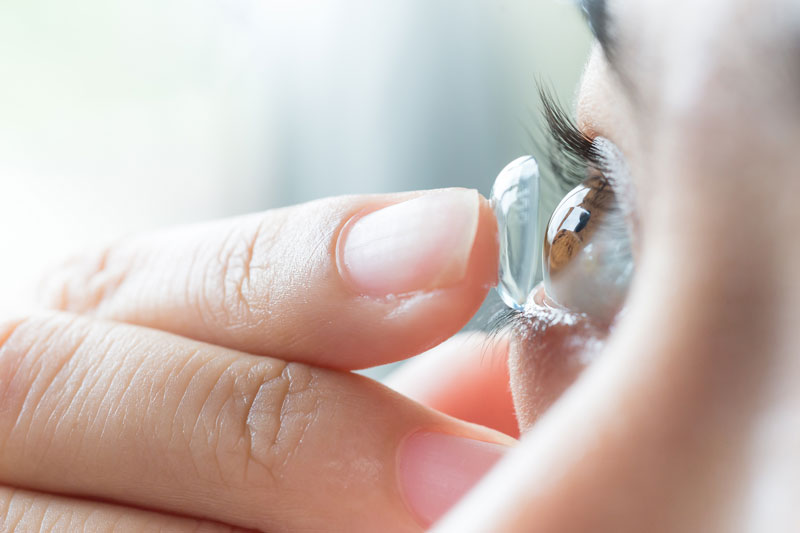Ophthalmology – Contact Lenses: Everything You Need to Know
According to recent research, a large number of people in the United Arab Emirates wear contact lenses. Whether you’re thinking about wearing contact lenses, or you’re already wearing contact lenses, it’s essential to understand how they work, the different kinds of lenses, and the potential complications they may cause.
How does Contact Lens Work?
Most people are aware of what contact lenses are, but have you ever thought about how they work? Similar to spectacles, the contact lenses alter the direction of the light rays to focus the light on the retina properly. Depending on whether you are short-sighted or far-sighted, contact lenses diverge or converge light rays to correct the focus of your eyes.
Contact Lens Types
The two types of contact lenses are hard (more commonly referred to as Rigid Gas Permeable or RGP contact lenses) and soft. Their names present a clear idea of the difference between the two.
RGP contact lenses are made of durable plastic and last much longer than soft contact lenses. A pair of RGP contact lenses, if adequately cared for, may last for years. Although they take longer than soft contact to feel comfortable in the eye, they are comfortable and relaxing after one week or two of consistent wear. RGP contact lenses might be the best contact option for individuals with certain astigmatism, presbyopia, keratoconus, and other eye problems.
Soft contact lenses comprise hydrophilic plastics called hydrogels. The amount of water in soft contact will affect the thickness of the lens. Unlike GRP contacts, they usually feel comfortable in your eyes very quickly. In the soft contact lens category, there are types of contacts that are made for daily wear, biweekly wear and monthly wear.
Possible complications of contact lenses
While contact lenses have come a long way since they were invented, it is still essential to know of the possible complications and risk factors associated with wearing contact lenses. From more common risks such as eye infections to rare but serious risks such as blindness, awareness of the symptoms of these risks can help you identify complications before they become serious.
Eye infections: a lack of proper care for your contact lenses can lead to eye infections. Serious eye infections that lead to blindness affect up to 1 in every 500 contact lens users per year.
Keratitis: A painful eye infection, usually linked to improper contact lens use, results in 1 million visits to the doctor and the hospital every year.
Properly caring for your contact lenses can reduce the risk of complications and infections in the eyes. It is important to rinse your contact lenses with a fresh saline solution every day, replace the saline solution in your lens container every day, and replace the contacts as directed.
Contact lenses are a convenient alternative to glasses and offer a lot of benefits to users. Consider visiting an ophthalmologist or eye doctor if you are considering contact lenses. The ophthalmologist will talk to you and answer any questions you may have. If you already wear contact lenses but have questions or concerns about proper care or any symptoms, you may experience, please schedule an appointment with the ophthalmologist.




